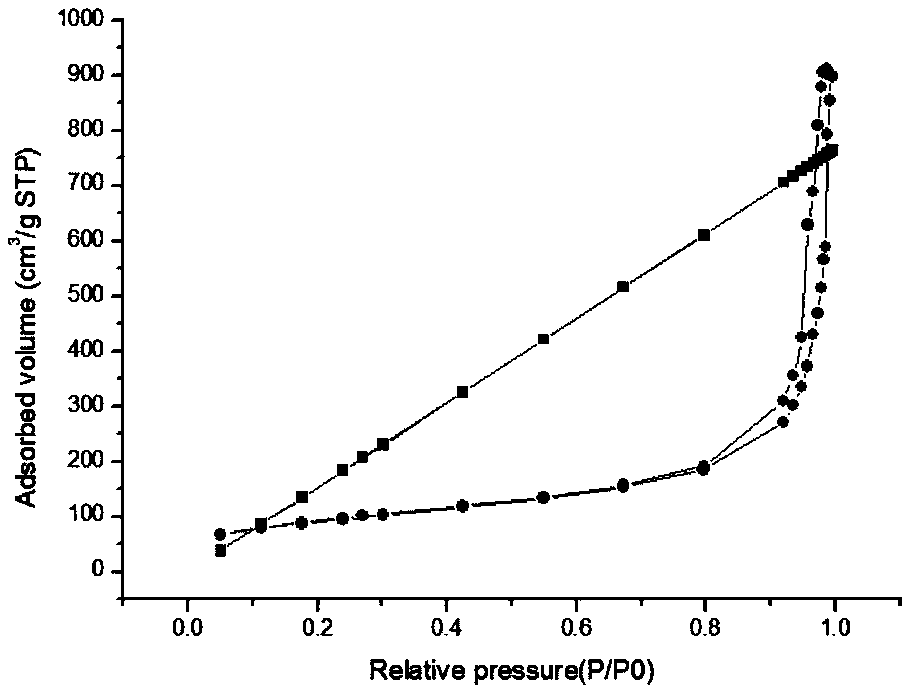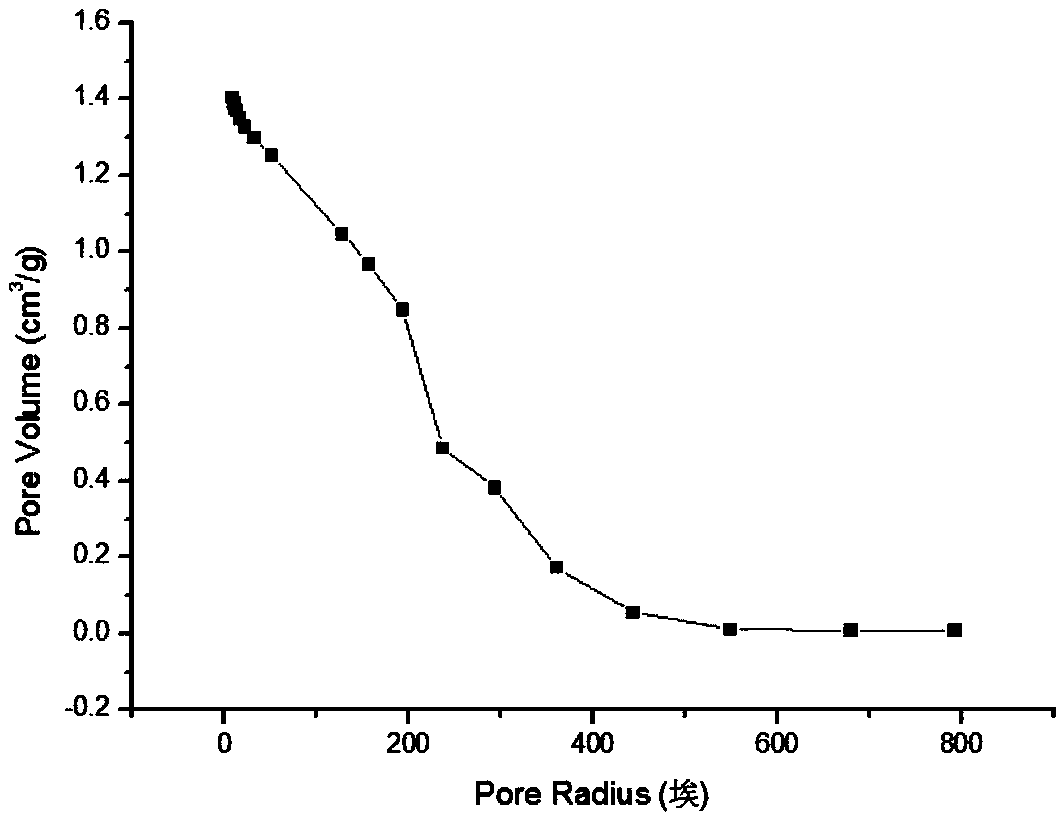Antimony-doped tin oxide aerogel and preparation method thereof
A technology doped with tin dioxide and antimony, which is applied in the direction of tin oxide, etc., can solve the problems of high density of antimony-doped tin dioxide material, complex preparation process, and unsuitability for production, and achieve stable airgel pore structure and process Simple, short-cycle effect
- Summary
- Abstract
- Description
- Claims
- Application Information
AI Technical Summary
Problems solved by technology
Method used
Image
Examples
Embodiment 1
[0039] (1) Weigh 30g of crystalline tin tetrachloride, 4.2g of antimony trichloride (12% doping), 500g of absolute ethanol, 40g of deionized water, and 15g of propylene oxide. Additives are FA and PEG6000. 5g and 2g respectively. Dissolve crystalline tin tetrachloride in a mixed solution of absolute ethanol and deionized water, and stir evenly to obtain a mixed solution a.
[0040] (2) Antimony trichloride was added to solution a, and stirred evenly to obtain turbid white solution b.
[0041] (3) During the stirring process, add 3 g of propylene oxide solution dropwise to the turbid white solution b, and stop adding propylene oxide dropwise after obtaining a colorless and clear solution c.
[0042] (4) During the stirring process, add additives FA and PEG6000 to the colorless and clear solution c, and wait for uniform stirring to obtain a mixed solution d.
[0043] (5) During the stirring process, continue to add the remaining propylene oxide solution dropwise. After the dro...
Embodiment 2
[0050] (1) Take by weighing 50g crystalline tin tetrachloride, 7.5g antimony trichloride (doping amount is 15%), 800g isopropanol, 60g deionized water, 30g propylene oxide, admixture is selected FA and CATB, mass 8g and 1.5g respectively. Dissolve crystalline tin tetrachloride in a mixed solution of isopropanol and deionized water, and stir evenly to obtain a mixed solution a.
[0051] (2) Antimony trichloride was added to solution a, and stirred evenly to obtain turbid white solution b.
[0052] (3) During the stirring process, add 6 g of propylene oxide solution dropwise to the turbid white solution b, and stop adding propylene oxide dropwise after obtaining a colorless and clear solution c.
[0053] (4) During the stirring process, add additives FA and CATB to the colorless and clear solution c, and stir evenly to obtain a mixed solution d.
[0054] (5) During the stirring process, continue to add the remaining propylene oxide solution dropwise. After the dropwise additio...
Embodiment 3
[0061] (1) Weigh 30g of crystalline tin tetrachloride, 4.5g of antimony trichloride (15% doping), 600g of absolute ethanol, 200g of n-butanol, 50g of deionized water, and 30g of propylene oxide. PEG10000 and CATB, the masses are 6g and 1.5g respectively. Dissolve crystalline tin tetrachloride in a mixed solution of absolute ethanol, n-butanol and deionized water, and stir evenly to obtain a mixed solution a.
[0062] (2) Antimony trichloride was added to solution a, and stirred evenly to obtain turbid white solution b.
[0063](3) During the stirring process, add 5 g of propylene oxide solution dropwise to the turbid white solution b, and stop adding propylene oxide dropwise after obtaining a colorless and clear solution c.
[0064] (4) During the stirring process, add additives PEG10000 and CATB to the colorless and clear solution c, and stir evenly to obtain a mixed solution d.
[0065] (5) During the stirring process, continue to add the remaining propylene oxide solution...
PUM
| Property | Measurement | Unit |
|---|---|---|
| Specific surface area | aaaaa | aaaaa |
| Bulk density | aaaaa | aaaaa |
| Average pore size | aaaaa | aaaaa |
Abstract
Description
Claims
Application Information
 Login to View More
Login to View More - R&D
- Intellectual Property
- Life Sciences
- Materials
- Tech Scout
- Unparalleled Data Quality
- Higher Quality Content
- 60% Fewer Hallucinations
Browse by: Latest US Patents, China's latest patents, Technical Efficacy Thesaurus, Application Domain, Technology Topic, Popular Technical Reports.
© 2025 PatSnap. All rights reserved.Legal|Privacy policy|Modern Slavery Act Transparency Statement|Sitemap|About US| Contact US: help@patsnap.com



